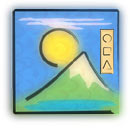On The Way: The Daily Zen Journal
Sayings of Daikaku
Part Two
Daikaku (1203-1268)
When you set out to look for the way of the Buddhas and patriarchs, at once it changes to something that is to be sought in your self. When sight becomes no sight, you come to possess the jewel, but you have not yet fully penetrated into it.
Suddenly one day everything is empty like space which has no inside or outside, no bottom or top, and you are aware of one principle pervading all ten thousand things. You know then that your heart is so vast that it can never be measured.
Johoshi says, “Heaven and earth and I of one root; the thousand things and I are one body.” These words are of burning import and absolutely true.
The illumined ones who have this principle clear in them, find that past, present and future are like dream-stuff. Wealth and rank, gain and fame are all an illusion; the mined gold and heaped up jewels, the beautiful voices and fair forms, are illusion; joy and anger and sorrow and happiness are this illusion.
But in all this illusion there is something which is not illusion. When even the universes crumble, how should that crumble? When at the end of the world cycle the universal fire blazes everywhere, how should that burn? That which is not illusion is the true being of each and every person.
Every day go into the calm quiet where you really belong, face the other way and turn your gaze back; if you do this over the long years, that which is not illusion will of itself reveal itself before you. After that manifestation, wherever you stand Buddha is there, and when you turn to the left or glance to the right, it is Shakyamuni everywhere.
Realization makes every place a temple; the absolute endows all beings with the true eye. When you come to grasp it, you find it was ever before your eyes. If you can see clear what is before your very eyes, it is what fills the ten directions; when you see what fills the ten directions, you find it is only what is before your eyes.
It is not, as some ancients and the Confucians taught, that you sweep away ordinary feelings and bring into existence some holy understanding. When ordinariness and holiness exist no more, how is that? An octagonal grindstone is turning in empty space; a diamond pestle grinds to dust the iron mountain.
The transcendent impulse is not from a source outside; the awareness of it is to be sought in movement and stillness both. When suddenly movement and stillness both cease to be, the vast blue ocean is dried up in one gulp.
Daikaku (1203-1268)
Excerpted from Zen and the Ways by Trevor Leggett




Daikaku is the formal title of a Chinese monk named Tao Lung. He came to Japan in 1246 to teach with very little knowledge of Japanese in the first years.
The above selection speaks to the heart of practice and as is the case with many selections, it is full to the brim of the beginning steps as well as a very evocative description of the “end” of practice.
The question for us in these times is how many of us will take the first step and continue into realized action?
Lightly moving forward,
Elana, Scribe for Daily Zen